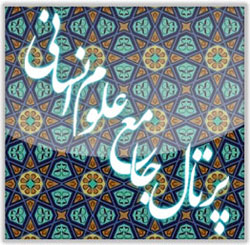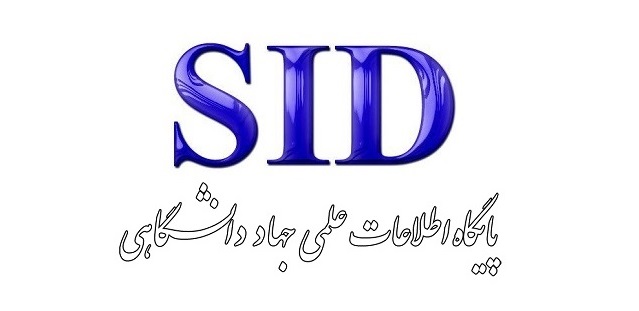Comparative Analysis of the Meaning Crisis and the Quest for Spirituality: A Case Study of Contemporary Residential Architecture in the West and Iran
Keywords:
Crisis of Meaning, Spirituality, Contemporary Western Architecture, Contemporary Iranian Architecture, Introversion, Comparative Analysis.Abstract
This study aims to conduct a comparative analysis of Western and Iranian architectural strategies for overcoming the meaning crisis in contemporary housing. The meaning crisis originates from instrumental reductionism and the negation of spiritual dimensions within Western modernism. This qualitative research, using a comparative approach and an eight-criteria analytical framework, investigates four key residential case studies (including the Vanna Venturi House and the Malagueira Housing Complex from the West; and Khāneh Daroon [Inner House] and Two Houses for Two Friends from Iran). The findings reveal a fundamental divergence in the approach to meaning: Western postmodern strategies focus on critical deconstruction and secular symbolism. For example, Venturi challenges hierarchical order, and Malagueira emphasizes social regionalism, both seeking meaning within lived experience and a secular context. In contrast, contemporary Iranian architectural strategies are grounded in the quest for sacred spirituality and the principles of Islamic–Iranian wisdom. The Iranian examples demonstrate that sustainable meaning lies in spatial thresholds and affective sensory experience by reviving hierarchical thresholds (Khāneh Daroon) and emphasizing the ethics of construction and collective relationship management (Two Houses for Two Friends). Conclusion: While the West seeks meaning through negation and secular irony, Iran achieves it through revival and sacred connection. The future of architecture requires an approach that integrates the authenticity of cultural and spiritual meaning with phenomenological necessities, shifting from static manifestos toward dynamic dialogue.
Downloads
References
1. Pérez-Gómez A. Architecture and the crisis of modern science. Cambridge: The MIT Press; 1983.
2. Norberg-Schulz C. Genius loci: Towards a phenomenology of architecture: Rizzoli International Publications; 1980.
3. Ardalan N, Bakhtiar L. The sense of unity: The Sufi tradition in Persian architecture. Chicago: University of Chicago Press; 1973.
4. Nasr T. The Role of 'Urban Signs' in Analyzing the Components of 'Identity' and 'Culture' in the Image of the Iranian City (Case Study: The Cityscape of Shiraz). Journal of Urban Identity. 2017;11(29).
5. Bachelard G. The poetics of space. Translated by M. Jolas ed: Beacon Press; 1964.
6. Ghobadian V. Philosophical Approach in Studying Iranian Architecture. Iranian Journal of Architecture, SID. 1999.
7. Mohammadi A. Investigating the Concept of Place in Modern and Post-Modern Architecture. Bagh-e Nazar Journal. 2015;12(36):15-28.
8. Heydari F, Karimi S. The Manifestation of Islamic-Iranian Spirituality in Contemporary Mosque Architecture. 2018.
9. Pazhouheshgar S, Ahmadi B, Karami J. Investigating the Crisis of Meaning in Contemporary Architecture by a Phenomenological Approach. 2021.
10. Habermas J. The Theory of Communicative Action, Vol. I: Reason and the Rationalization of Society. Translated by T. McCarthy ed1984.
11. Benjamin W. The Work of Art in the Age of Mechanical Reproduction1969.
12. Jencks C. The Language of Post-Modern Architecture1977.
13. Venturi R. Complexity and Contradiction in Architecture. New York: Museum of Modern Art Press; 1966.
14. Le Corbusier. Towards a New Architecture. London: Architectural Press; 1946.
15. Pallasmaa J. The Eyes of the Skin: Architecture and the Senses. Chichester, UK: John Wiley & Sons; 2005.
16. Nasr SH. Islamic Art and Spirituality. Albany: SUNY Press; 1987.
17. Pirnia MK. Style Study of Iranian Architecture (Sabk Shenasi-ye Memari-ye Iran). Tehran: Cultural Research Office; 1991.
18. Akbari AA, Bazrafkan K, Tehrani F, Soltanzadeh H. Explaining Contextual and Regional Design Approaches in Iranian Architecture: Case Study of Notable Works in Tehran. Journal of Urban Management. 2017.
Downloads
Published
Submitted
Revised
Accepted
Issue
Section
License
Copyright (c) 2025 هومن رنجبر (نویسنده); محسن وفامهر; سید محمد خسرو صحاف, محسن طبسی (نویسنده)

This work is licensed under a Creative Commons Attribution-NonCommercial 4.0 International License.









